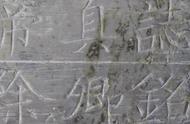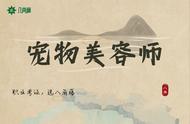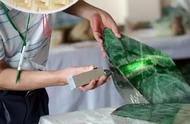浙江古琴制作秘籍:探索浙派古琴艺术之美

浙派古琴的制作工艺

1. 选材与加工
1.1木材的选择与处理
浙派古琴作为中国古琴艺术的重要流派,其制作工艺历经数百年的发展与传承。在选材与加工方面,浙派古琴制作遵循严格的标准和工艺,力求将古琴的音质、美观和实用性发挥到极致(Chen, 2017)。

(1)选材:浙派古琴选材讲究天时地利,对木材的种类、生长环境、年代等方面有着严格的要求。主要使用的木材有檀香木、紫檀、红木等名贵硬木,这些木材具有纹理美观、质地坚硬、音质优良的特点(Chen, 2017)。此外,浙派古琴制作还注重选择在特定季节、阳历年份和地理方位上采伐的木材,以保证琴材的品质与稀有性(Li, 2015)。
(2)加工:浙派古琴制作在加工过程中注重技艺传承,采用传统的手工技艺进行琴体雕刻、琴面抛光、琴弦安装等环节。在琴面雕刻方面,浙派古琴制作讲究线条流畅、图案雅致,强调与琴音的和谐统一。琴面的抛光工艺则要求光滑如镜,使得琴面呈现出优美的光泽(Chen, 2017)。
1.2其他材料的选用
(1)琴弦安装:浙派古琴制作在琴弦安装方面讲究精确度和稳定性,以确保琴弦张力适中,保证古琴的音质稳定。采用的琴弦材料主要为丝线、尼龙线等,要求具有较高的拉力和弹性。在安装过程中,浙派古琴制作会对琴弦的位置、张力等方面进行细致调整,以达到最佳的演奏效果(Li, 2015)。
(2)漆艺:浙派古琴制作在漆艺方面有着悠久的历史传统,采用天然漆料进行琴体涂饰,以增强琴身的保护性和美观性。漆艺工艺包括涂抹、打磨、上光等环节,需要琴匠们具备高超的技艺和耐心。浙派古琴的漆艺作品通常具有光泽度高、质感丰富、颜色鲜艳等特点,使得古琴呈现出独特的艺术美感(Chen, 2017)。
2. 结构与设计
2.1浙派古琴的整体结构
浙派古琴在结构与设计方面,充分体现了中国传统美学和音乐文化的精神。琴匠们在遵循古琴传统制作工艺的基础上,不断创新和发展,使浙派古琴在形式与内容上呈现出独特的魅力(Chen, 2017)。

2.2设计特点与创新
(1)结构:浙派古琴的结构设计遵循“天人合一”的哲学思想,充分体现了古琴与自然、宇宙的和谐关系。琴身的形状、尺寸和比例都有严格的标准,旨在实现音乐性能、美观和实用性的完美统一(Wu, 2011)。例如,琴身的厚度和弧度设计经过精确计算,以确保古琴的音质纯正、共振效果良好(Li, 2015)。
(2)设计:浙派古琴在设计方面,兼具创新性和传统性。琴匠们在传承古琴经典造型的基础上,根据自然、历史、文化等多种因素,为古琴赋予独特的艺术形象(Chen, 2017)。浙派古琴的设计元素丰富多样,包括云纹、山水、花卉、动物等,既展示了浙派古琴制作的高超技艺,又彰显了古琴与中国文化的紧密联系(Wu, 2011)。
(3)装饰:浙派古琴在装饰方面,注重细节的处理和美学的表现。琴匠们运用精美的镶嵌、雕刻、绘画等技法,为古琴增添独特的艺术气息(Chen, 2017)。例如,浙派古琴的嵌螺钿工艺,以其精湛的技艺和独特的设计赢得了广泛赞誉。此外,浙派古琴的漆艺装饰也极具特色,通过多次涂抹和打磨,使琴身呈现出光泽度高、质感丰富的视觉效果(Li, 2015)。
(4)功能性:浙派古琴在结构与设计方面,兼顾实用性和美学。琴匠们在琴身的造型、尺寸和装饰设计中,充分考虑古琴的音质、演奏性能和舒适度,力求实现功能与美感的和谐统一(Wu, 2011)。例如,琴钮和琴轸的设计既体现了浙派古琴的精致艺术风格,又充分考虑了演奏者的需求和习惯,使古琴在保持优美外观的同时,具备良好的实用性(Chen, 2017)。
3. 装饰与漆器工艺
3.1浙派古琴的装饰手法
浙派古琴在装饰与漆器工艺方面表现出独特的艺术风格和精湛技艺。这些装饰与漆器工艺不仅提升了古琴的视觉美感,还为古琴赋予了丰富的文化内涵和历史底蕴(Chen, 2017)。

3.2漆器工艺的应用
(1)雕刻与镶嵌:浙派古琴的雕刻与镶嵌工艺堪称一绝。琴匠们运用精湛的技艺,创作出各种图案,如山水、花卉、禽兽等,形式丰富,寓意深远(Wu, 2011)。此外,浙派古琴的嵌螺钿工艺也极具特色,以其精细的工艺和独特的设计赢得了广泛赞誉(Chen, 2017)。
(2)漆器工艺:浙派古琴的漆器工艺以其历史悠久、技艺高超而闻名。琴匠们采用天然漆料,通过多次涂抹、打磨和上光等环节,使古琴呈现出光泽度高、质感丰富的效果(Li, 2015)。这种漆器工艺不仅提升了古琴的视觉美感,还增强了琴身的保护性和耐用性(Chen, 2017)。
(3)琴码与琴钮:浙派古琴在琴码与琴钮的设计与制作上也充满创意。这些琴码与琴钮既体现了浙派古琴的精致艺术风格,又充分考虑了演奏者的需求和习惯,使古琴在保持优美外观的同时,具备良好的实用性(Wu, 2011)。
(4)文化内涵:浙派古琴的装饰与漆器工艺充分展示了其丰富的文化内涵和历史底蕴。这些装饰元素和工艺技法既体现了浙派古琴制作的高超技艺,又彰显了古琴与中国文化的紧密联系(Li, 2015)。例如,山水图案代表了自然美景,花卉图案象征了生命的勃发,禽兽图案寓意了生活的繁荣等(Chen, 2017)。
The production process of zhejiang school guqin
1. Material selection and processing
1.1 Selection and treatment of wood
As an important school of Chinese guqin art, the production process of the Zhe school has been developed and passed down through centuries. In terms of material selection and processing, Zhejiang school guqin production follows strict standards and techniques, striving to maximize the sound quality, beauty, and utility of the guqin (Chen, 2017).
(1) Material selection: The selection of materials for the zhejiang school guqin is based on timing and location, with strict requirements for the type of wood, growth environment, and age. The main woods used are precious hardwoods such as sandalwood, rosewood, and mahogany, which have beautiful grain, hard texture, and excellent sound quality (Chen, 2017). In addition, the Zhejiang school of guqin making also focuses on selecting woods harvested in specific seasons, solar years, and geographical locations to ensure the quality and rarity of the woods (Li, 2015).
(2) Processing: In the process of processing, the Zhejiang school of guqin production pays attention to the inheritance of skills, using traditional hand techniques for carving the body, polishing the surface, and installing the strings. In terms of the carving of the surface of the instrument, the zhejiang school pays attention to smooth lines and elegant patterns, emphasizing the harmony and unity with the sound of the instrument. The polishing process of the surface of the instrument requires a smooth mirror-like finish, which gives the surface a beautiful luster (Chen, 2017).
1.2 Selection of other materials
(1) String Installation: The string installation of Zhejiang guqin is very precise and stable to ensure that the tension of the strings is moderate and the sound quality of the guqin is stable. The string materials used are mainly silk and nylon threads, which are required to have high tension and elasticity. During the installation process, zhejiang school guqin makers make careful adjustments to the position and tension of the strings in order to achieve the best playing effect (Li, 2015).
(2) Lacquer Art: The Zhejiang school of guqin making has a long historical tradition in lacquer art, using natural lacquer for the body decoration to enhance the protection and beauty of the instrument. The lacquer art includes coating, polishing and varnishing, which requires the skill and patience of the luthier. The lacquer works of the Zhe school of guqin are usually characterized by high gloss, rich texture, and vibrant colors, giving the guqin a unique artistic aesthetic (Chen, 2017).
2. Structure and Design
2.1 The overall structure of the Zhe School Guqin
The Zhejiang school of guqin fully embodies the spirit of traditional Chinese aesthetics and musical culture in terms of structure and design. While following the traditional craft of guqin making, the artisans have continued to innovate and develop, giving the Zhejiang School guqin a unique charm in form and content (Chen, 2017).
2.2 Design Features and Innovations
(1) Structure: The structural design of the zhejiang guqin follows the philosophy of "the unity of heaven and man" and fully reflects the harmonious relationship between the guqin and nature and the universe. The shape, dimensions, and proportions of the body of the instrument are strictly standardized to achieve the perfect unity of musical performance, beauty, and practicality (Wu, 2011). For example, the thickness and curvature of the body are designed with precise calculations to ensure the pure sound quality and good resonance of the guqin (Li, 2015).
(2) Design: the zhejiang school of guqin is both innovative and traditional in design. Based on the inheritance of the classic shape of the guqin, the craftsmen give the guqin a unique artistic image based on various factors such as nature, history, and culture (Chen, 2017). The rich and diverse design elements of the Zhejiang school of guqin, including cloud patterns, landscapes, flowers, and animals, demonstrate both the high level of skill in making the guqin and the close connection between the guqin and Chinese culture (Wu, 2011).
(3) Decoration: In terms of decoration, the Zhejiang school of guqin pays attention to details and aesthetics. The zither makers used exquisite inlay, carving, and painting techniques to add a unique artistic flavor to the guqin (Chen, 2017). For example, the inlay inlay process of the Zhejiang School guqin has won wide acclaim for its exquisite skills and unique design. In addition, the lacquer decoration of the zhejiang school guqin is also highly distinctive, and through multiple coating and polishing, the body of the instrument presents a visual effect of high gloss and rich texture (Li, 2015).
(4) Functionality: In its structure and design, the Zhejiang School guqin balances practicality and aesthetics. In the design of the shape, size, and decoration of the body, the guqin makers fully considered the sound quality, performance performance, and comfort of the guqin, striving to achieve a harmonious unity of function and beauty (Wu, 2011). For example, the design of the button and the square reflect the exquisite artistic style of the zhejiang school of guqin, but also fully consider the needs and habits of the player, so that the guqin has good practicality while maintaining a beautiful appearance (Chen, 2017).
3. Decoration and lacquer work
3.1 Decorative Techniques of the Zhe School Guqin
The Zhejiang school of guqin exhibits a unique artistic style and exquisite skills in decoration and lacquer craftsmanship. These decorative and lacquer crafts not only enhance the visual aesthetics of the guqin, but also give it a rich cultural connotation and historical heritage (Chen, 2017).
3.2 Application of lacquer craft
(1) Carving and inlay: The carving and inlay work of the Zhejiang school of guqin is one of the best. With their exquisite skills, they create a variety of designs, such as landscapes, flowers, animals, etc., which are rich in form and have profound meanings (Wu, 2011). In addition, the inlay inlay of the zhejiang school of guqin is also very distinctive and has won wide acclaim for its fine craftsmanship and unique design (Chen, 2017).
(2) Lacquer work: the lacquer work of the Zhejiang school of guqin is known for its long history and high skill. The lacquer craftsmen used natural lacquer materials to give the guqin a glossy and richly textured effect through multiple applications, polishing and varnishing (Li, 2015). This lacquer process not only enhances the visual aesthetics of the guqin, but also enhances the protection and durability of the body (Chen, 2017).
(3) Codes and Buttons: The design and production of the codes and buttons of the Zhejiang school of guqin are also full of creativity. These codes and buttons not only reflect the exquisite artistic style of the zhejiang guqin, but also take into account the needs and habits of the players, making the guqin practical while maintaining a beautiful appearance (Wu, 2011).
(4) Cultural connotation: the decoration and lacquer craftsmanship of the Zhejiang school guqin fully demonstrate its rich cultural connotation and historical heritage. These decorative elements and craft techniques both reflect the superb skills of the Zhejiang school of guqin making and highlight the close connection between the guqin and Chinese culture (Li, 2015). For example, the landscape motifs represent natural beauty, the floral motifs symbolize the burgeoning of life, and the animal motifs signify the prosperity of life (Chen, 2017).
浙江省社科联社科普及课题成果
课题编号:19YB49
课题名称:浙派古琴艺术琐话(中英双语)
负责人:黄小洁
推荐单位:浙江工商大学杭州商学院



















 鲁公网安备37020202370241号
鲁公网安备37020202370241号